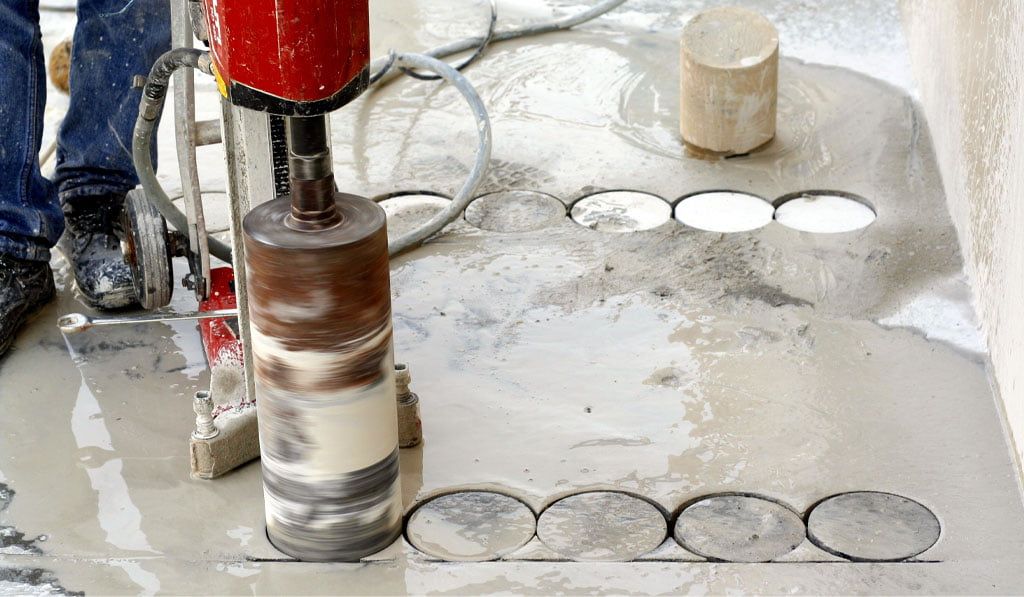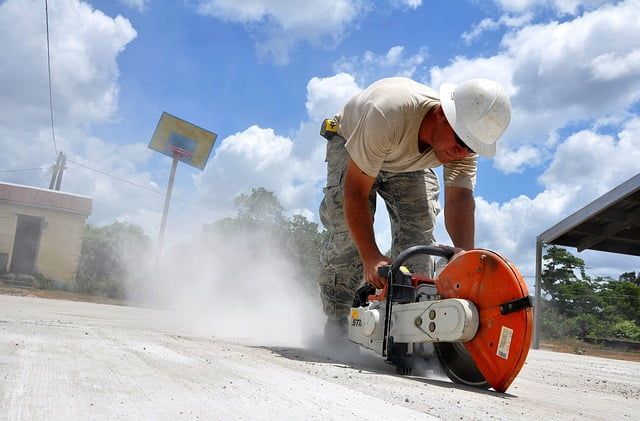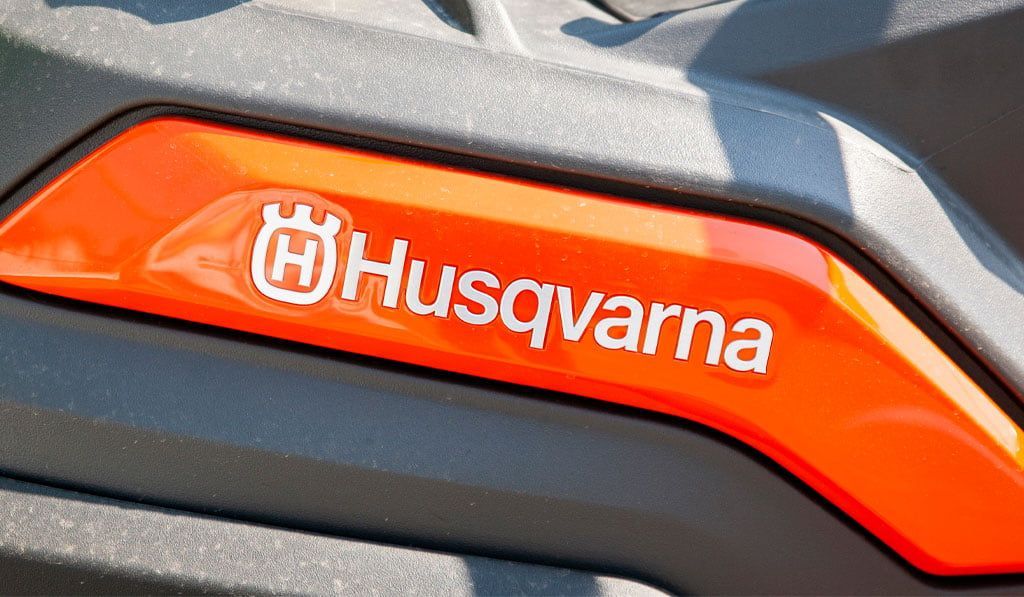What to Do Before Drilling in Concrete
Share this article:
When planning to drill or cut into concrete, the preparation period is crucial and should always begin by utilizing a ground penetrating radar (GPR).
A GPR survey can accurately gather and record data in a safe, non-invasive way, which the GPR technician can then use to layout the mechanical and structural components of the slab. How does the GPR work? Why is it so crucial? Before drilling in concrete, make sure you review this simple explanation of the history of pre-drilling techniques, what a GPR is, why utilizing GPR services is crucial (and the adverse effects of not using it), and how an excellent scanning job should be performed at a new jobsite.
History of GPR Technology
Before the early 19 th century, most concrete workers didn’t have any comprehensive pre-drilling or sawing practices, and they wouldn’t have known the necessary precautions to take before making penetrations into concrete. GPR is an incredible geophysical technology, is a relatively recent creation that has grown in maturity over the past couple of decades. When Christian Hülsmeyer received the very first patent in radar technology in 1904, he probably never imagined what it would become. Initially, his system was used by others to find buried objects, the perfect tool to bring to a treasure hunt.

In 1929, the radar technology was implemented in scientific research, such as measuring the depth of glaciers. After WWII, it was drafted for military use. Using subsurface technology, scientific groups would intensely study the ground for tunnels. Finally, industrial services adopted the technology as well. At last, a comprehensive pre-drilling practice could be implemented.
Since 1970, GPR technology has been further used for archaeology, military purposes, and—of course—industrial scanning.
What Does a GPR Do?
How does a GPR work? The name is fairly self-explanatory. Similar to a bat’s echolocation, ground penetrating radar utilizes a radio transmitting antenna to send high-frequency signals into the surface of the earth. These signals are then reflected off any obstacles in the ground, bouncing back to the GPR receiver, which then allows the scanning tech to interpret the raw data and mark the objects located in 2D form in real time on the structure itself.
GSSI , a high-quality GPR equipment provider, explains in detail how a ground penetrating radar system records signals: “The strength, or amplitude, of the reflection is determined by the contrast in the dielectric constants and conductivities of the two materials. This means that a pulse which moves from dry sand (dielectric of 5) to wet sand (dielectric of 30) will produce a very strong reflection, while moving from dry sand (5) to limestone (7) will produce a relatively weak reflection.”
With proper interpretation, these recorded signals show scanning technicians the location and depth of targets within the concrete. Subsequently, various GPR equipment is utilized, depending on the depth of the structure being surveyed. Scanning technicians can identify various potential conflicts, including post tension cables, conduit, rebar, beams and radiant heat lines.
Concrete core drilling procedure
Concrete core drilling is a specialized service offered by companies that know their way around cutting concrete. They use a concrete drill to pull out a chunk of concrete, also known as a core.
For concrete core drilling, the go-to tool is the diamond core drill. This tool comes in handy when you need to:
- Install recessed lights and fixtures
- Cut through walls, floors, and ceilings for plumbing, HVAC, cables, electricity, and communication services
- Examine bits of concrete
- Dig holes in roadways for doweling, drainage, or tying in some rebar
- To make sure things are spot-on, the concrete cutting technician uses a small threaded anchor to secure the drill post to the wall or concrete slab. Then, they bolt the drill post to guide the core drilling.
This setup ensures the drill hits the target dead-on, giving you a smooth core. Once the drill post is secure, the technician attaches the right drill bit based on what the client needs. With the bit in place, they fire up the drill. Water keeps things cool during drilling, and pressure on the crank gets the job done.
The core drill has a hand crank that moves the drill to the surface, cutting through the concrete. Once the surface is pierced, out comes the core with the bit.
Why Scan Before Drilling in Concrete?
- Safety: Many extraneous objects can impede drilling into concrete, such as electrical conduits, rebar, pvc or metal pipes, and post tension cables. These embedded items can prove dangerous if not identified before any drilling is done. A GPR will locate reinforced steel (rebar or post tension cables). These spots can then be marked and entirely avoided. Electrical conduits are essential to find too. If conduits are cut or damaged, severe power outages can occur. More importantly, coming in contact with a subsurface object could seriously injure concrete workers.
- Time: If not addressed before a job has begun, running across subsurface objects can be time-consuming to deal with. Hitting an object could significantly delay your progress – a detriment for timely projects.
- Money: A clear and accurate idea of the project will indicate exactly how many resources are required. Your client will know what to expect. Furthermore, a delayed project can incur extraneous costs.
What Does an Excellent Scanning Job Consist Of?
- Visual Scan: Survey the entire space you’re about to work in. During a preliminary walkthrough, taking note of visual clues, such as the integrity (or lack thereof) of the concrete, can determine what GPR methods should be used in your next step.
- GPR Scan: After your visual walkthrough, GPR technology can be implemented to complete a sub-surface search. All embedded objects will be recognized, data recorded.
- Analyzing Scans: All GPR data should now be carefully analyzed. As mentioned, reinforced steel, electrical conduits, and pipes should all be permanently marked on the surface of the concrete. Pictures should be taken and a layout can be drawn. As a concrete drilling company, your employees should never have to guess where to drill or cut. As a client, you should never have to wonder what the final product will look like. Utilizing GPR services is essential for both these goals to be accomplished.
Your Concrete Cutting Service Resource
GPR scanning is not infallible. However, utilizing it prior to drilling in concrete can reduce unnecessary costs, preserve time, and (quite literally) save lives. We understand this. Our team is dedicated to complete customer satisfaction—and the safe, responsible completion of concrete projects. At Cobra Concrete Cutting, we employ GPR services readily. Our scanning division efficiently and accurately scans a jobsite, utilizing GSSI equipment, in up to 16” thick concrete. Thicker slabs may be scanned from both sides if available. Ultimately, our mission is to revolutionize the concrete industry through a unique level of service and passion. We strive for excellence and safety. For more information, request a quote or give us a call!
Receive a FREE Quote On Your Next Job
We pride ourselves on our commitment to complete client satisfaction and safety, and we have the reputation and track record to prove it.
Check us out on:



